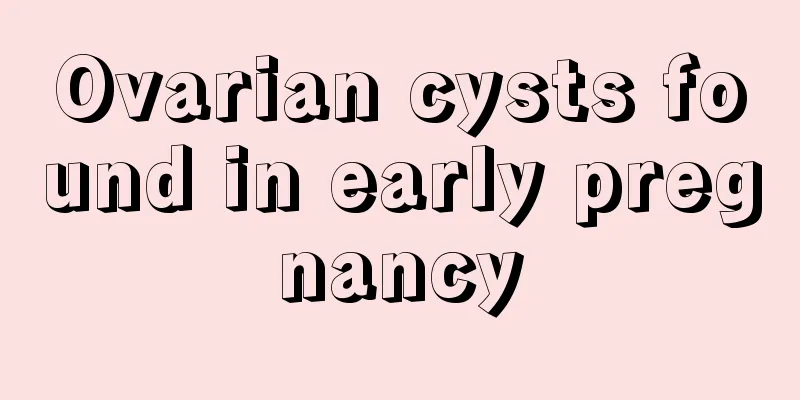Ovarian cysts found in early pregnancy

|
Discovering ovarian cysts in the early stages of pregnancy is a very common disease in daily life. It will not only cause great harm to the patient's physical health, but also seriously affect their normal life and fertility. Therefore, it is particularly important to understand relevant knowledge and find scientific and effective treatment methods. When people find relevant symptoms, they need to seek medical treatment in time and choose appropriate treatment methods according to their actual situation. 1Hello, what you said is most likely a lutein cyst. This condition is mostly due to physiological changes during pregnancy. The cyst is generally not too large and usually disappears on its own after three months of pregnancy. In a few people, the cyst may be larger and rupture, causing intra-abdominal bleeding. Some people also have torsion of the cyst pedicle. Both conditions are accompanied by sudden severe abdominal pain, and severe cases are accompanied by shock symptoms. Therefore, you should pay attention to abdominal pain. If you feel any discomfort, go to the hospital in time. If you do not feel any discomfort, do not worry about the cyst. At the same time, you should regularly check the size of the cyst. If the cyst persists and grows rapidly, surgery can be performed after the third month of pregnancy. 2 Mainly look at the size of the cyst, there are physiological and pathological ones. If it is very small, it is physiological. We say that those below 6 centimeters are physiological. You can observe for a period of time to see whether it is inflammatory or a tumor. It is best to go to the hospital to listen to the doctor's opinion. After the doctor examines you, he will give targeted treatment based on your examination results. 3 Most women who have uterine fibroids before pregnancy can go through the entire pregnancy smoothly, but the symptoms will become more obvious as the gestational age increases. In a few cases, the following situations may occur: if the fibroid is large and increases significantly during pregnancy, it may become red and degenerate, with dull pain in the abdomen (more common when the diameter of the fibroid exceeds 3 cm), fever and other symptoms, and even miscarriage and premature birth. Not only that, when I went to see the doctor, he said that if the morphology of the uterus is affected, abnormal fetal position may occur; if the fibroid is submucosal and the placenta is attached to the surface of the fibroid, placental abruption may occur. After giving birth, more than 90% of fibroids will shrink to their pre-pregnancy state 3-6 months after delivery. |
<<: Right ovarian cyst in early pregnancy
>>: Should I wear a bra during breastfeeding?
Recommend
"Health from eating" series | Why do we often say "eat radish in winter and ginger in summer"? Uncover the mystery of Chinese medicine diet therapy
"Eat radish in winter and ginger in summer&q...
What causes fallopian tube adhesions?
I don't know how much you know about fallopia...
If a pregnant woman is tired, will the fetus be tired too? What are the dangers of overwork for pregnant women?
Generally speaking, pregnant women should not ove...
Canalys: Global shipments of smart wearable wristband devices reached 50 million units in Q4 2022
Canalys recently released a report stating that i...
What are the precautions after removing the ring?
The contraceptive ring, like the condom, is a con...
The physical education exam is approaching. How can children practice scientifically and efficiently? Please keep this guide!
Recently, Xiao Zhang, a junior high school studen...
What to do if you have 2nd degree uterine prolapse
Uterine prolapse is a common disease among women,...
Understand ALS and care for ALS patients
June 21 is World ALS Day. The medical name of ALS...
How to avoid gaining weight during confinement?
During the confinement period, a woman’s task is ...
What to do if a 40-year-old woman stops menstruating
Normal menopause should be between 45 and 55 year...
Why is there white dirt on the vulva
There is a lot of milky white dirt in the private...
Do kidney beans make people fat? How to store kidney beans
In our daily diet, making kidney beans into dried...
Is uterine curettage necessary for pelvic effusion?
The pelvis is an extremely important part for wom...
Dysmenorrhea causing vomiting
Many women experience dysmenorrhea during their m...
When do peonies bloom? Which city is the hometown of peonies?
Many friends who like flowers like peonies, not o...









